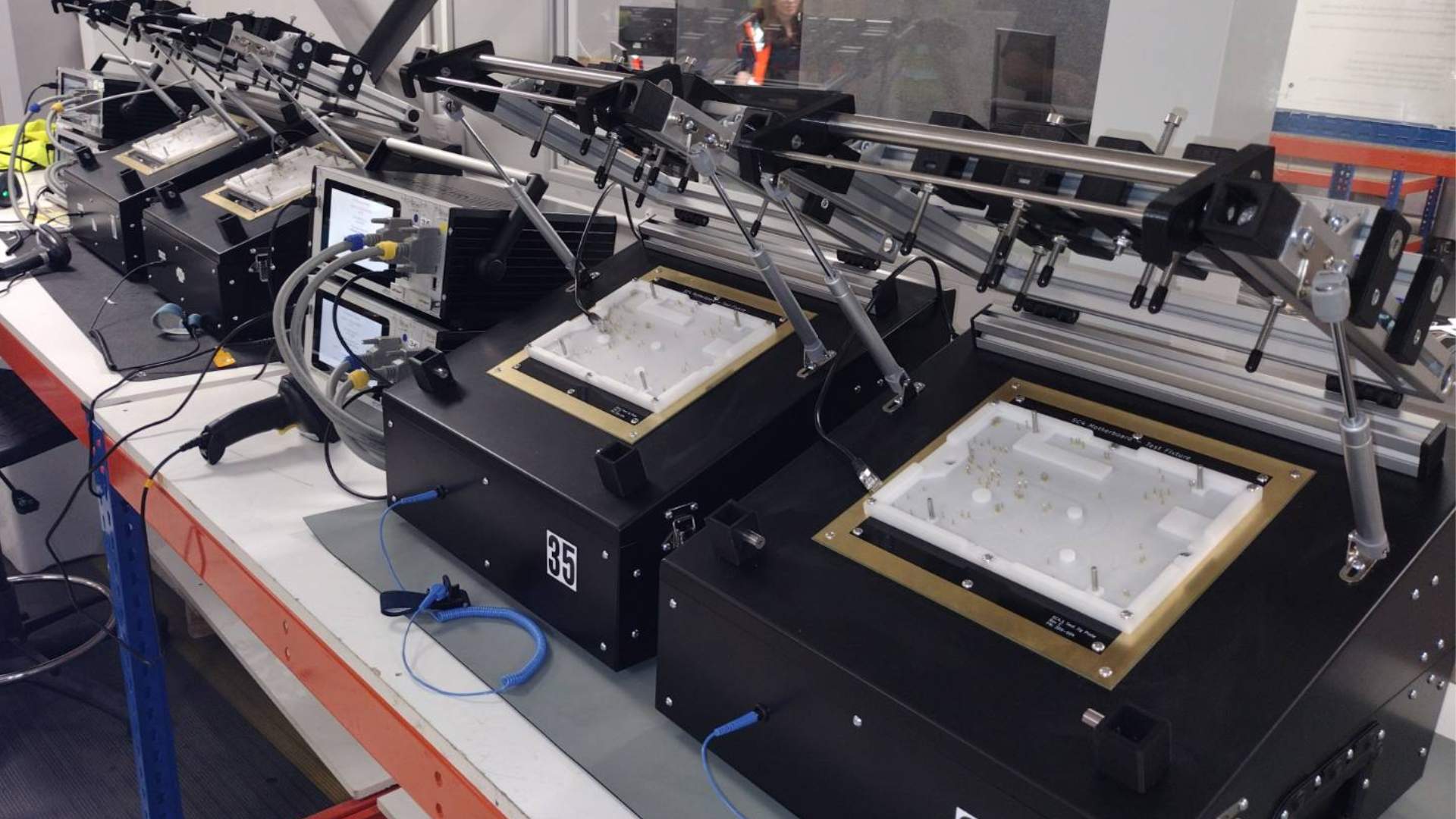About Indra
Indra, founded in 2013, had a mission to create the smartest way to power EVs, and since then, has quickly become a leading EV smart charger and smart energy technology business on the market. Indra now offers a wide range of innovative EV smart chargers that have made their way into thousands of homes and commercial locations worldwide.
The Challenge
Indra was transitioning from low to high production volume without sufficient design for test readiness. This raised not only questions about how to test at the component level, but also concerns about maintaining a high standard of quality. The early end-of-line product test solution was a real-world electric vehicle, which lacked data logging and traceability. This method was also slow and costly for testing purposes.
Following our guidance, Indra updated their motherboard design to use dedicated test pads, resulting in a small redesign to enable the use of a test fixture with sprung test “pogo” pins.
- Devtank helped with a number of design reviews for compliance and testability. Changes were made to the layout, suitable for high-volume production
- Designs were changed based on test data to improve production yields. Swapping components with a high failure rate and improving the repeatability of manufacturing.

The Solution
Devtank designed and manufactured motherboard PCB testers and end-of-line rigs simulating a charging cycle with a real vehicle to safely discharge power into a dummy load.
The motherboard test solutions were built up using our HILTOP system, PRODTOP test software, and bespoke test fixtures. These were designed with the user in mind, utilising our barcode scanning system. This enables the tester or user to scan the barcode of the motherboard or device under test in order to automatically run specific test scripts. They then just proceed to secure the device or board in its fixture and press go. The design also enabled Indra to scale up production and testing alongside growing demand for their chargers.

The end-of-line test rigs replaced the need for a real-world electric vehicle and instead simulated an EV in order to test the fully assembled chargers. Using the same barcode system as the motherboard testers, these rigs were again very user-friendly.
As standard, the HILTOP systems make use of an SQL database for both storage and generation of test scripts, but also for storage of each test result. This is a key piece of the testing puzzle as it enables the company, in this case Indra, to analyse their quality processes and find trending issues. Having the tools to locate the source of problems makes it far quicker and easier to solve issues and heavily reduces the likelihood of in-field failures.
Outcomes
Indra has full traceability over their production lines and quality data. Generating less E-waste from faulty products and having one of the highest reliability figures in the industry. Overall quality has risen incredibly, supporting Indra to be a leading manufacturer in this space.
The user-friendly barcode system drives the automated test process, eliminating the requirement for manual testing or data entry. This has a massive positive impact on their process and productivity levels as they can now test products in minutes rather than hours.
The EV simulation in the end-of-line test rigs heavily reduces testing time and cost… and there’s no need for that real electric car!


